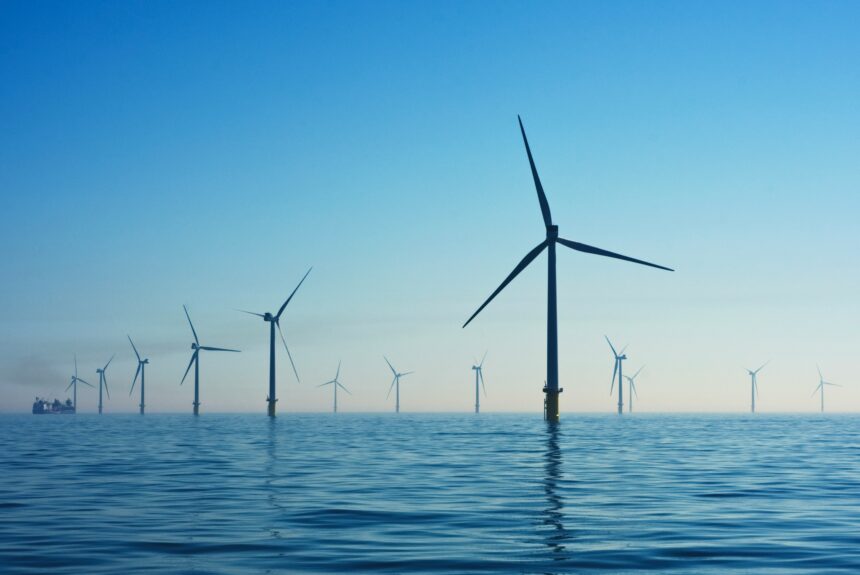A century-old law known as the Jones Act is hampering America’s shipping industry and the country’s ability to build infrastructure such as offshore wind. With policy reform unlikely at this time, developers are adopting innovative methods such as drones to skirt the regulatory boondoggle that this law imposes.
The Merchant Marine Act of 1920, more commonly known as the Jones Act, was adopted as a national security measure during wartime. The Act stipulates that vessels shipping goods between American ports must be American-built and operated by a crew that is at least 75 percent American.
>>>READ: For a Cleaner, More Competitive Economy, Repeal the Jones Act
By not allowing foreign-flagged vessels to move from U.S. port to U.S. port, the Jones Act restricts competition and increases shipping costs. Designed to build up a domestic shipbuilding capacity, the Jones Act has complicated supply chain logistics, increased costs for American consumers, and hamstrung disaster relief efforts. Critically, the law has failed to achieve its intended purpose of maintaining a robust, world-class shipping industry.
Additionally, the barriers imposed by the Jones Act make it harder and more expensive to build offshore wind. To ship something from shore out to a development site, offshore wind developers must comply with the Jones Act. Up until this year, there were no Jones Act-compliant wind turbine installation vessels available, according to the U.S. Coast Guard. Dominion Energy recently launched a 471-foot Jones Act-compliant vessel called Charybdis to help finish its Coastal Virginia Offshore Wind Project off the coast of Virginia Beach. The price tag for Charybdis has continued to balloon as the ship is built, and shipbuilding costs, coupled with regulatory red tape and supply pricing, are a key part of why the estimated cost to build the Coastal Virginia Offshore Wind project is now billions higher than original projections.
This was not the first time Dominion’s plans for offshore wind had been complicated by the Jones Act. Before developing the Coastal Virginia project, Dominion installed a two-turbine pilot project in Virginia waters. To get around the Jones Act, the company had to spend more to have supplies shipped from Europe to Canada. Those supplies were then ferried from Canadian ports straight to the turbines, bypassing American ports and Jones Act requirements, yet creating a much longer journey.
Offshore wind developers have turned to three options for projects in American waters: halt development, desperately try to use other Jones Act-compliant ships to piecemeal a solution together, or sail from Canadian ports. All of these options have significant drawbacks and increase costs for projects. But now, European use of cargo drones at offshore wind farms offers a promising fourth alternative for American developers.
>>>READ: It’s Time to Repeal the Jones Act
Ørsted, the Danish renewable energy giant, has been testing cargo drones at Borssele 1 & 2, a Dutch offshore wind farm that boasts 94 turbines. An individual drone can carry 220 pounds of cargo and can transport supplies from a vessel to the nacelle (the large box at the top of the turbine) in under four minutes. The conventional process takes around six hours.
Rasmus Errboe, Ørsted’s chief commercial officer and deputy CEO, commented, “The drones at Borssele 1 & 2 … will improve safety, bring down carbon emissions, and reduce the cost of operating offshore wind farms, which all further improve the commercial fundamentals of offshore wind for investors, governments, and corporations.”
While Ørsted has been testing drone use at an operational offshore wind farm, using cargo drones in the United States for turbines under development could allow developers to comply with the Jones Act while lowering costs and project length. Drones could carry in project materials from shore or other Jones Act-compliant vessels and deliver the cargo directly to the turbine under construction. Using this sort of technology could reduce project costs, timelines, and dependency on Jones Act-compliant ships.
The Jones Act will continue to stall offshore wind development and exact broader economic harm on American households and businesses until Congress musters the political will to repeal it. Until then, drones might help offshore wind developers find a cost effective way around the pointless law.
Kelvey Vander Hart is a senior fellow at The Wilberforce Institute and a communications specialist at Reason Foundation.
Editor’s note: This piece has been updated to better reflect Charybdis’ role in increasing the cost of the Coastal Virginia Offshore Wind project.
The views and opinions expressed are those of the author’s and do not necessarily reflect the official policy or position of C3.
